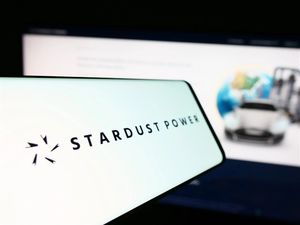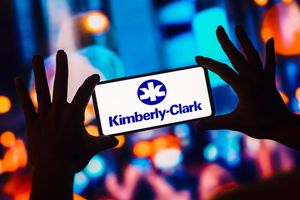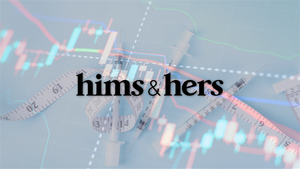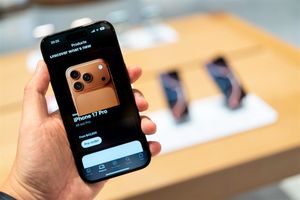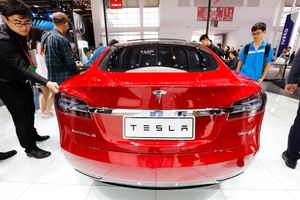The MAGIC SHOW in Las Vegas: An Analysis of North American Buyers' Purchasing Habits
As a bellwether for the global apparel industry, the MAGIC SHOW in Las Vegas is not only a showcase for the latest designs but also a central hub connecting suppliers with professional North American buyers. For independent sellers focused on exporting men's jackets, understanding the purchasing habits of North American buyers at the show is the key to entering the North American market. This article, combining the latest MAGIC SHOW 2025 updates with industry data, comprehensively analyzes the North American Men's Jacket purchasing ecosystem, encompassing buyer profiles, decision-making logic, trend preferences, and partnership strategies.

I. Key Understanding of the Show: The "Gathering Place" and Purchasing Characteristics of North American Buyers
The MAGIC SHOW in Las Vegas is no ordinary trade show. Its 200,000 square meter exhibition area brings together nearly 100,000 professional buyers from over 110 countries and regions. Thirty-nine major retailers, representing over 50% of the US apparel market, regularly participate in delegations. The composition and behavioral characteristics of these buyers directly influence purchasing trends for men's jackets.
1. Buyer Profile: Differences in Demand Among Three Core GroupsNorth American buyers exhibit a clear stratification structure, with significant differences in purchasing needs and partnership preferences among these groups. This requires precise matching for men's Jacket Suppliers:Large Retailers: These are represented by 35 major US retailers, including Macy's and Walmart, with annual apparel imports of approximately $20 billion. They place an average order quantity of 2,400 pieces per style for men's jackets. These buyers prioritize supply chain stability and scalability, particularly focusing on essential items like winter warmers and business jackets. They are moderately price-sensitive but have stringent requirements for timely delivery.
Brand Wholesalers: These include the purchasing teams of renowned brands like Levi's and Tommy, with annual import volumes reaching $35 billion. They also maintain high order quantities of 2,400 pieces per style. They prioritize jacket design uniqueness and brand alignment, focusing on Spring/Summer 2025 Bomber Jackets and updated workwear styles. They prefer to partner with suppliers that offer customized services. Small and medium-sized retailers and direct-to-consumer (DTC) e-commerce companies: This category continues to grow in terms of buyer share, accounting for 47% of new buyers at the show in 2025. They order small quantities (12-36 pieces per style) but frequently restock. They particularly favor suppliers that can handle small orders (minimum 6 pieces) and short lead times of 45 days. They also have strong demand for lightweight jackets and versatile business jackets suitable for online sales.
Notably, over half of these buyers are at the vice president level or above, 80% are seeking new suppliers with specific requirements, and 75% close deals directly at the show. This suggests that efficient communication and professional presentations directly determine the success rate of successful partnerships.
2. Core Purchasing Characteristics: Prioritizing Efficiency and ValueNorth American buyers' purchasing behavior consistently revolves around two key priorities: efficiency and value. The one-stop shopping experience provided by MAGIC SHOW is its key advantage that cannot be replicated by online channels. Buyers can complete the entire process, from fabric selection and sample confirmation to order placement, right within the exhibition area. For highly seasonal categories like men's jackets, this efficient matching helps buyers seize market opportunities. For example, purchasing decisions for winter jackets are typically made during spring trade shows, allowing ample time for production and distribution.
II. The Logic Behind Purchasing Decisions: Four Key Dimensions Focused on by North American Buyers
Men's jackets are a must-have item in the North American market (the US men's outerwear market reached $53.57 billion in 2023). Purchasing decisions are based on multi-dimensional considerations, and suppliers must precisely address key concerns.
1. Product Strength: From "Functional Adaptation" to "Scenario Integration"North American buyers' requirements for men's jackets have evolved from basic warmth to a three-dimensional integration of "function + style + scenario integration," specifically demonstrating three major trends:
Functionality and Fabric Upgrades: Climate diversity drives functional segmentation – the northern market prioritizes windproof and waterproof winter jackets made with high-performance fabrics like GORE-TEX, while the southern market prefers spring and autumn jackets with UPF50+ sun protection and cooling fabrics. Sustainable fabrics are also a key advantage. Jackets made with recycled cotton and eco-friendly polyester are particularly popular with brand wholesalers, and 55% of American consumers are willing to pay a premium for eco-friendly products.
Balancing classic style with innovation: Data from the 2025 exhibition shows that "reinventing classics" is the mainstream trend. Air Force jackets are incorporating preppy details, work jackets are optimized for urban wear, and shirt jackets are regaining growth momentum in the North American market. Furthermore, innovative designs such as magnetic stand-up collars and hidden pockets can enhance product competitiveness and meet the need for seamless transitions between business and casual settings.
Sizing and local adaptation: The physique of North American men dictates that jackets need to have a looser fit, with more inclusive shoulder and waist cuts, and must comply with the US Apparel Sizing Standard (ASTM D5585). The proportion of large-size jackets (XL-3XL) purchased by retailers such as Walmart continues to increase, and suppliers need to plan their sizing systems accordingly.
2. Supply Chain: A Dual Test of Flexibility and StabilityAgainst the backdrop of tariff fluctuations and supply chain restructuring, North American buyers are increasingly demanding supply chain requirements. Chinese suppliers' core advantage is shifting from "low cost" to "flexibility":Flexible Production Capacity: Compared to Southeast Asian suppliers' minimum order quantities of thousands of pieces, Chinese exhibitors' low MOQs (minimum order quantities) of 300 pieces and short 45-day delivery times precisely meet the replenishment needs of small and medium-sized retailers and direct-to-consumer (DTC) e-commerce platforms. This flexibility is a key factor in attracting new buyers in the rapidly evolving fashion industry.
Supply Chain Stability: Despite tariff uncertainty, over 70% of North American brands maintain partnerships with Chinese suppliers. This is primarily due to the process stability and supply chain resilience of Chinese manufacturing. For example, Southeast Asian factories are unlikely to replace Chinese factories in the short term for tanning leather jackets and laminating functional fabrics. During their inspections, buyers will focus on verifying a factory's production capacity reserves, raw material inventory, and contingency plans.
Value-Added Services: Dropshipping, warehousing, and logistics services are becoming new leverage points in partnerships. The 2025 MAGIC SHOW featured a special forum highlighting Chinese manufacturers that offer integrated "inventory-packaging-delivery" services. These services can help North American retailers reduce operating costs and significantly increase order conversion rates.
3. Compliance and Trust: The "Barrier to Entry" for CollaborationThe North American market has extremely strict compliance requirements for apparel products, and any non-compliance can result in order cancellations or product recalls:
Mandatory Compliance Standards: Men's jackets must comply with the Federal Trade Commission (FTC) labeling requirements, clearly indicating fiber composition, country of origin, and care instructions; children's jackets must pass CPSC flammability testing (even for men's and older sizes). Third-party testing reports must be available at the show, as they are a prerequisite for major retailers to purchase from them.
Social Responsibility Certification: Large organizations such as Walmart and Macy's require suppliers to obtain BSCI or SMETA certification to demonstrate compliance with labor rights and environmental standards in their production processes. Data from the 2025 show showed that certified Chinese suppliers received over three times more orders than uncertified companies.
Trust-Building Mechanisms: Buyers prefer to work with suppliers with experience in the North American market. Showcasing past collaborations, customer testimonials, or photos of offline store displays at trade shows can quickly reduce trust costs. Furthermore, offering sample trials and quality assurance guarantees (e.g., a three-month warranty on leather jackets) can further strengthen confidence in cooperation.
4. Cost and Pricing: Balancing Transparency and ReasonablenessAlthough tariff fluctuations can increase procurement costs, North American buyers aren't simply seeking low prices; rather, they focus on the "cost-to-value" ratio.
Cost Transparency: Large buyers will require suppliers to provide a detailed cost breakdown (including fabrics, processing, logistics, and tariffs) rather than a general quote. Suppliers who proactively explain tariff sharing plans (e.g., sharing a 5% tariff) are more likely to secure long-term partnerships.
Adapting Pricing Strategies: Develop differentiated pricing for different channels. Wholesale prices for large retailers should allow for a 15%-20% retail margin. Prices for DTC e-commerce platforms may include a dropshipping premium, but should be kept within 10% of comparable product prices.
III. Practical Exhibition Strategies: From "Attracting Visitors" to "Securing Orders"
MAGIC SHOW's high trade success rate (80%) is built on a precise exhibition strategy. Men's jacket suppliers must manage the entire process from "pre-show preparation - on-site reception - post-show follow-up."
1. Pre-show: Accurately Match Buyer NeedsProduct Portfolio Planning: Filter exhibits based on target buyer types. For large retailers, focus on mass-produced items such as winter warm jackets and business jackets to highlight scalable supply capabilities. For brand wholesalers, prioritize designer items (such as vintage air force jackets and jackets made from sustainable fabrics), complemented by fabric sample books and design sketches. For e-commerce buyers, showcase lightweight, easy-to-ship jackets to emphasize the advantages of small-batch replenishment.
Materials to Prepare: English product brochures (including size charts, fabric specifications, and compliance certifications), case studies, quotation templates (with MOQ, delivery date, and tariff information), and a digital sample library (for on-site delivery to buyers). Pre-Buyer Matchmaking: Check the list of registered buyers in advance through the official exhibition website. Send personalized invitations to 39 major retailers and well-known brand wholesalers, noting "Exclusive samples are ready," to increase their attendance.
2. On-site: Effectively convert potential customersBooth display techniques: Zone your booth by location (business commuting area, outdoor functional area, casual fashion area). Place one or two core exhibits in each area, paired with three or four accessories (such as scarves and gloves) to enhance the sense of immersion. Highlight key selling points (such as "Recycled cotton material | 45-day delivery") next to key exhibits to quickly attract attention.Communication Design: Start with a direct demand (e.g., telling retailers, "We can provide waterproof jackets for your winter line with a minimum order of 2,000 pieces per style, with a 60-day delivery time"), then delve deeper based on feedback (e.g., if a buyer asks about price, you can respond, "The basic model is $45 per unit, and $48 including tariffs, which is 3% lower than your current supplier"). Instant Closing Techniques: For small and medium-sized buyers, we offer "exhibition-exclusive policies" (e.g., waived sample fees for on-site orders and a 5% discount on first orders); for large buyers, we offer on-site letter of intent and complimentary customized samples (e.g., jackets embroidered with the buyer's logo) to seal the deal.
3. Post-Show: 72-Hour Golden Follow-up Period
Tiered Follow-up Strategy: For buyers who sign letters of intent on-site, we'll send order confirmations and detailed quotes within 24 hours. For potential buyers who leave their contact information, we'll send product information and sample links within 48 hours, noting "Samples available within 3 days." For buyers who simply stop by to inquire, we'll send thank-you emails and key product recommendations within 72 hours.
Sample Delivery Management: Prioritize samples for high-potential buyers, attach a "trial guide" (e.g., waterproof testing methods for functional jackets), and agree to follow up with feedback within 3 days. Samples must be labeled with the booth number and contact person to reinforce brand recognition. Promoting Order Closure: For hesitant buyers, we offer "small trial orders" (e.g., a 300-piece trial order, followed by a larger order upon satisfaction) to lower the decision-making threshold.

Conclusion: Seizing the Initiative in Collaboration Amid Trends
The 2025 Magic Show in Las Vegas sent a clear signal: the North American men's jacket market is moving toward functionality, sustainability, and flexibility. Buyers' purchasing logic has evolved from simply purchasing products to sourcing solutions. For independent export sellers, understanding these changes and transforming show insights into product strategies, supply chain capabilities, and service advantages can help them build irreplaceable partnership barriers in a market characterized by fluctuating tariffs and intensifying competition.
Media Contact
Company Name: Shanghai Zhongda Wincome Co., Ltd.
Email: Send Email
Phone: +8613777492106
Address:Room 250g, 25 / F, Guodu Development Building, 182 Zhaohui Road
City: Hangzhou
State: Zhejiang
Country: China
Website: https://www.hzwincome.com/

